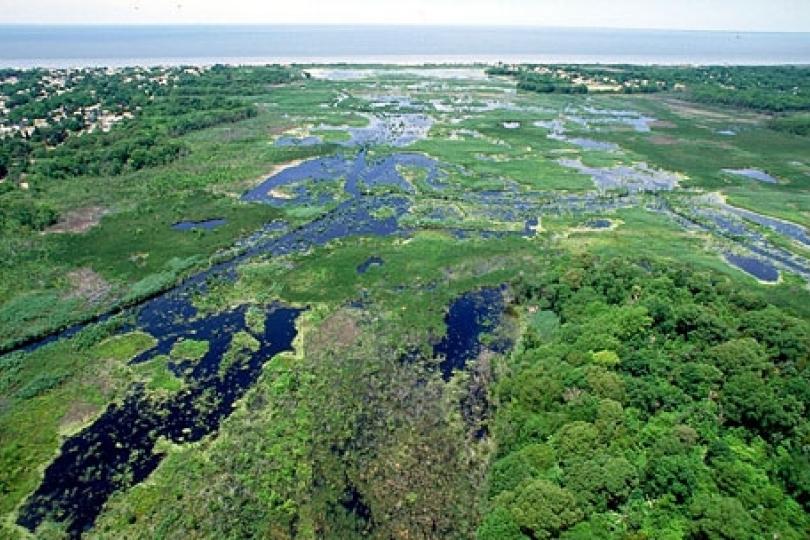Using Wetlands to Mitigate Climate Change
Wetlands are a critical and underutilized part of the climate change adaptation picture. They can provide a reservoir of clean water for droughts, filter stormwater, be a basin for large quantities of water, and serve as a buffer for coastlines during extreme weather events, and can even provide some protection for inhabited areas against forest fires. According to a 2014 NOAA report, however, in the coastal zone alone we are losing the equivalent of sixty-one football fields per day of wetlands to development.
Brenda Zollitsch (2009), whose work as a policy analyst at the Association of State Wetland Managers (ASWM) is partially funded by a Switzer Leadership Grant, says one underappreciated challenge in addressing wetland loss is a chasm between the management of these issues between programs.
In the case of stormwater and wetlands management, managers perceive the issues differently, use different language to discuss the same issues, and are trained to approach the issues very differently. Without understanding the background and technical issues behind both management efforts, there will be limited success in trying to get the two efforts to coordinate. ASWM is working to better understand, troubleshoot and break down these barriers.
Zollitsch says we need to start thinking outside of the box about how wetlands can be integrated into climate change work. For example, for the increasing frequency of extreme precipitation events, she says we need to be looking at the impacts of stormwater on wetlands and, simultaneously, ways to marry infiltration and storage of water in ecosystem-friendly ways with both natural and constructed wetlands.
That might mean thinking way outside of the box, for example, using beaver restoration, which is now being seen as an increasingly viable natural way to restore wetlands and reduce a range of climate change impacts in specific areas.
Zollitsch has been working recently on a study of state wetlands managers to find out what states are currently doing about climate change adaptation and to see where there might be synergies or results that can be shared more widely. Given that many state wetlands managers are not able to address climate change directly for political reasons, she has been working to understand other state-funded, wetland-related efforts to reduce risk, adapt programs and policies that prepare for extreme weather events and save money through impact avoidance that are not recognized as “climate change” work by the state, yet address some of the same issues.
Zollitsch has found that building relationships over time is critical to doing her work successfully. She has focused on using good process, whether researching best practices or exploring facilitation models to make sure her results are reliable and replicable.
Ultimately, Zollitsch believes that progress is possible and that solutions can be found that save wetlands from impacts, such as development and stormwater pollution. She believes we can move towards an ecosystem services approach to promote wetland protection and restoration, since they provide services to commercial fisheries and the timber industry, and offer recreational opportunities and improve water quality for human populations.
Additional Resources
Association of State Wetland Managers

